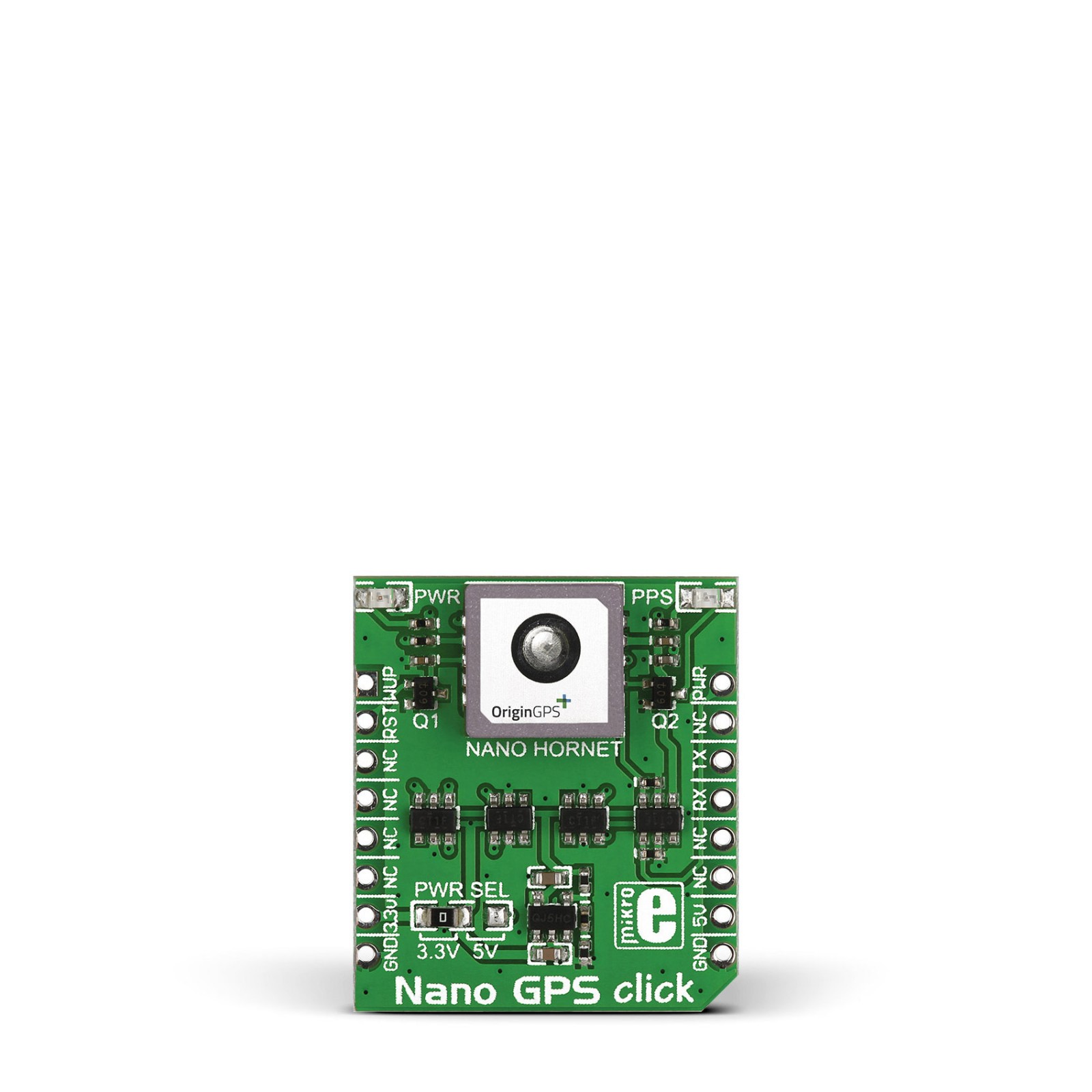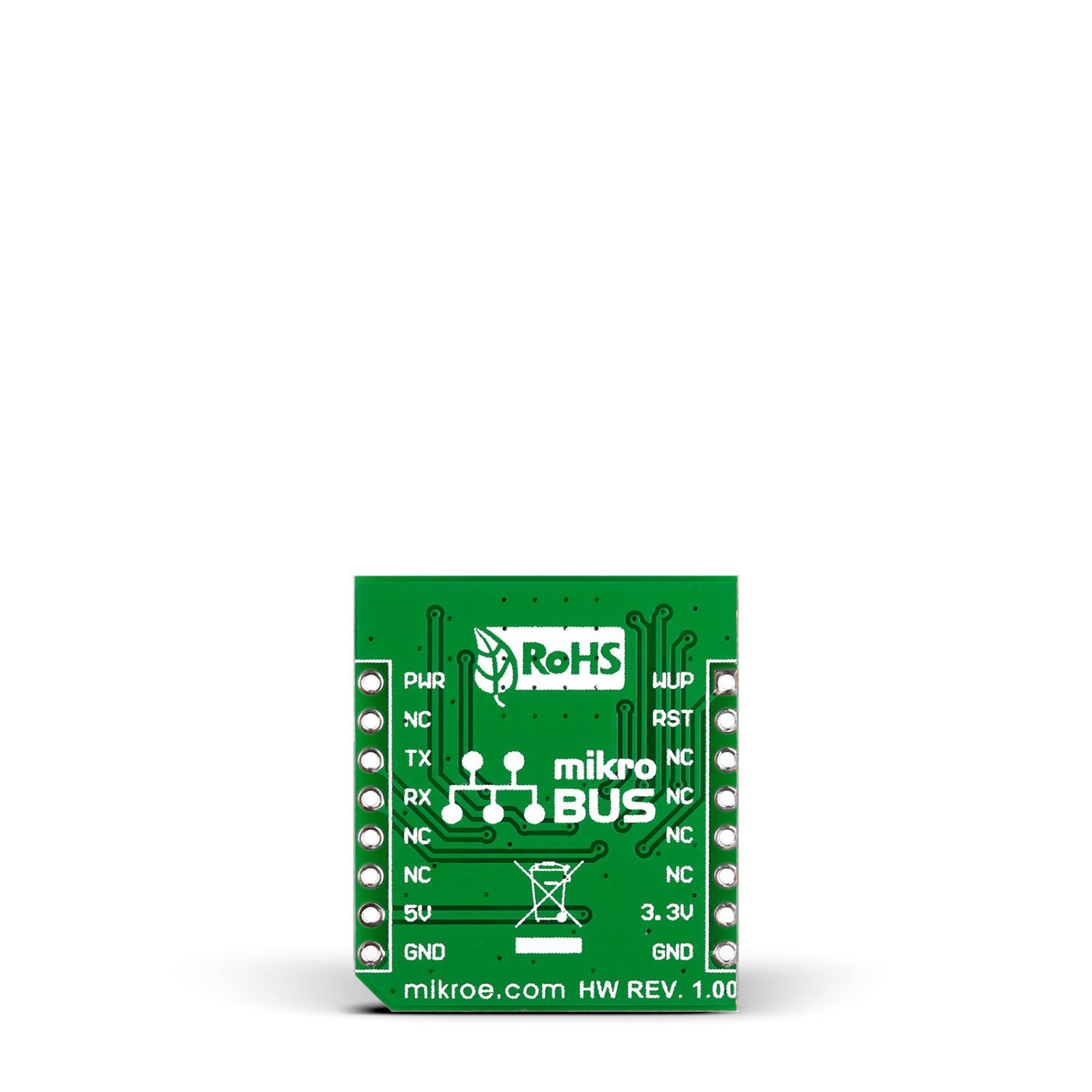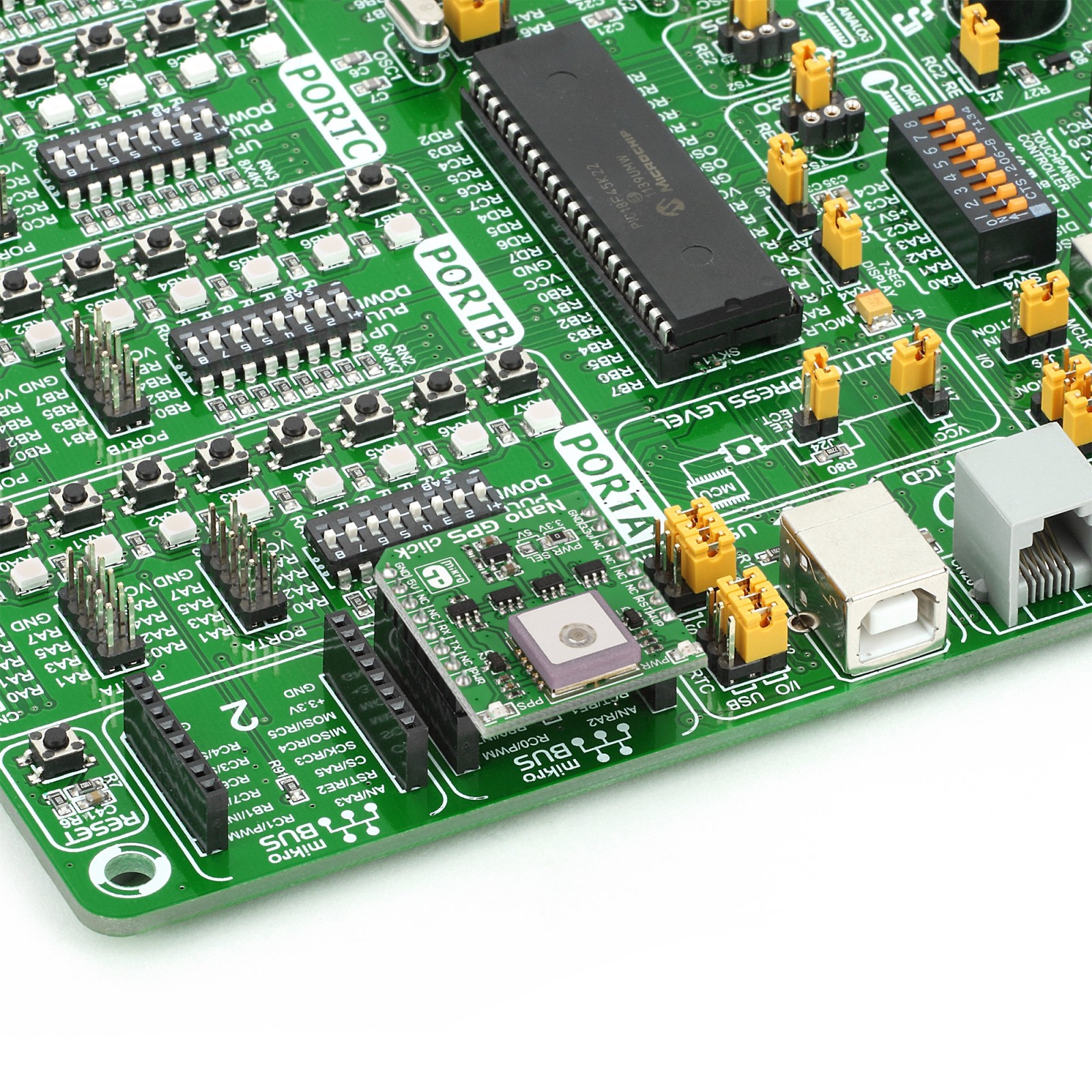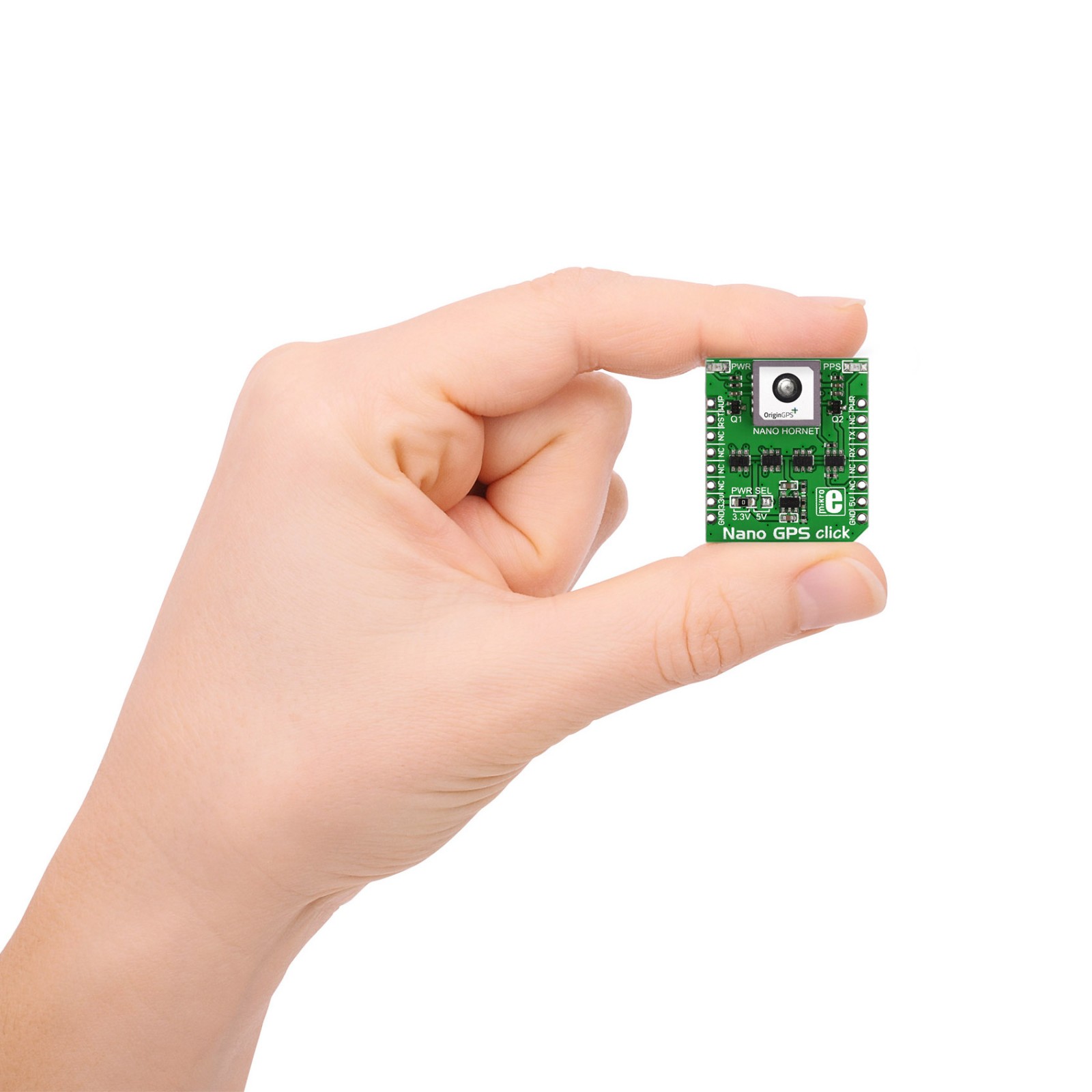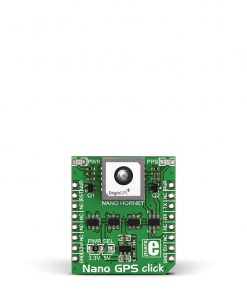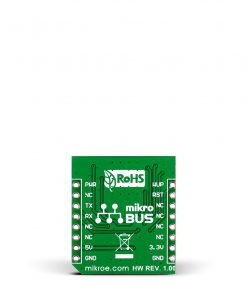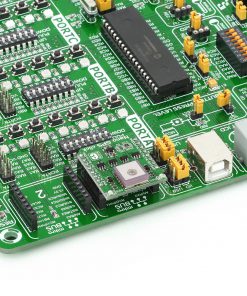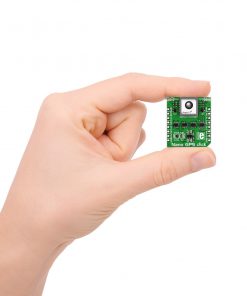Nano GPS Click is a compact add-on board that provides fast positioning capabilities. This board features the Nano Hornet ORG1411, a complete SiP GPS Patch-on-Top (PoT) module from OriginGPS. It is the industry’s smallest GPS module with an integrated patch antenna. This compact module features multi-channel GPS, with SBAS, QZSS, and other regional overlay systems receiver that continuously tracks all satellites in view, providing real-time positioning data in the industry’s standard NMEA format. Besides NMEA, this module can also switch into One Socket Protocol (OSP). This Click board™ makes the perfect solution for prototyping size-constrained devices with GPS functionality.
Nano GPS Click is supported by a mikroSDK compliant library, which includes functions that simplify software development. This Click board™ comes as a fully tested product, ready to be used on a system equipped with the mikroBUS™ socket.
 GSM-GPS Click
1 × R1,300.00
GSM-GPS Click
1 × R1,300.00  GPS Click
1 × R1,050.00
GPS Click
1 × R1,050.00  EXPAND Click
1 × R260.00
EXPAND Click
1 × R260.00  DIGI POT Click
1 × R370.00
DIGI POT Click
1 × R370.00  tRF Click
1 × R1,050.00
tRF Click
1 × R1,050.00 
